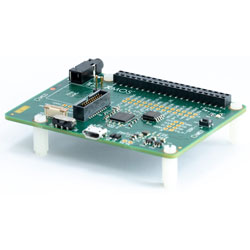
XMOS has introduced XVF3610 and XVF3615 Voice processors: the next generation of high performance dual MIC voice interfaces for wireless speakers, TVS, set-top boxes, gateway products, smart appliances and more.
The design represents an evolution of the XVF3510 speech processor currently used in Amazon Alexa systems, and provides powerful audio echo cancellation and interference cancellation algorithms to suppress noise from primary sources and allow cross-room interference. Ai chip infrastructure, devices provide industry-leading voice processing solutions in easy-to-integrate and cost effective packages. The device also integrates automatic audio reference delay calibration, a key capability for voice TV systems, expanding the range of devices and environments where voice interfaces can be implemented.
Facing a challenging supply chain, XMOS can confirm that processors can be delivered in large quantities within standard lead times. And XVF3615 adds embedded Amazon wakeword processing to single-channel Alexa-enabled systems, allowing manufacturers to offload wakeword processing from their host SoC systems.
Leveraging the flexibility of the Xcor.ai platform, Avona provides customizable reference designs for speech, wakeword, speech to intention, and intelligent speech applications. In a further development of the range of voice solutions offered, the company has launched the Alpha phase for target customers with the new "Avona" voice reference design.
Programming in C or C ++, including user application code in the FreeRTOS environment, the Scoring SDK supports the use of bare metal and RTOS, providing customers with complete flexibility and the ability to add custom differentiation to the final product. For intelligent iot applications, this voice reference design enables engineers to include keywords, event detection or advanced local dictionary support to produce a complete voice interface solution. Partners and customers can also use the core SDK to produce their own voice-based solutions.
"The iot market is creating new verticals and opportunities at a breakneck pace, and we see huge demand in the smart home space," said Mark Lippett, CEO of XMOS. As more and more applications become commercially attractive or viable, engineers and designers need to rely on hardware to provide agility and cost-effective performance without compromising quality. When it comes to voice control, our new line of voice solutions provides another weapon to enable designers to continue to push the boundaries of voice innovation in the smart home and beyond."
"Versatility is the key to all three of these new voice solutions," said Rob Fisher, Product director at XMOS. "It's the inherent structure of Xcore. Artificial intelligence chip. Designers have a choice: What kind of computational balance do we want? How many sound elements are customizable? Are we coding on bare metal or FreeRTOS? This flexibility will help them innovate in other ways."